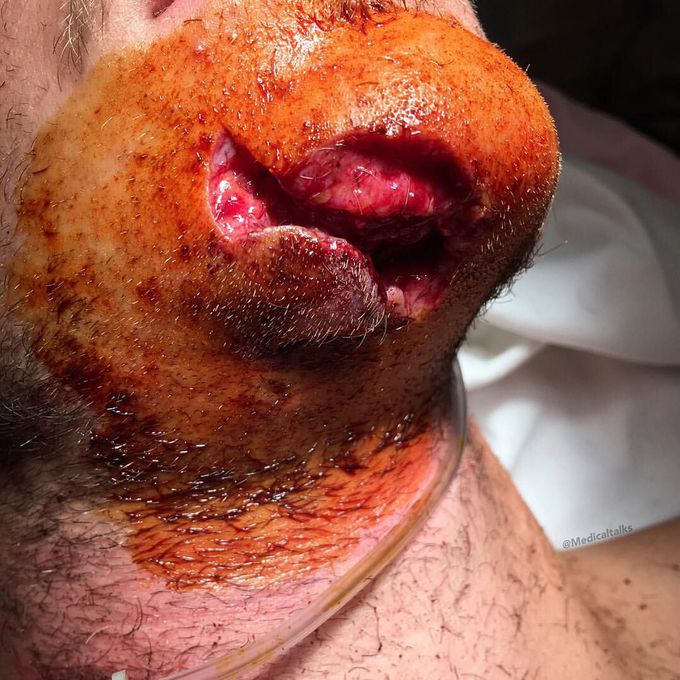


Laceration
A laceration is a wound that is produced by the tearing of soft body tissue by a sharp object or by impact injury from a blunt object or force. This type of wound is often irregular, jagged, and is contaminated with bacteria and debris from whatever object caused the cut. Severe lacerations may extend through the full thickness of the skin and into subcutaneous tissues, including underlying muscle, internal organs, or bone, and is accompanied by significant bleeding and pain. Sutures, tissue adhesives, staples, and skin-closure tapes are options in the outpatient setting. Physicians should be familiar with various suturing techniques, including simple, running, and half-buried mattress sutures. Although suturing is the preferred method for laceration repair, tissue adhesives are similar in patient satisfaction, infection rates, and scarring risk in low skin-tension areas and may be more cost-effective. Wounds requiring extensive debridement or multiple-layer closure are best repaired with a suture. Areas of high skin tension, such as over joints, or areas with a thick dermis, such as on the back, should be repaired with sutures or staples. Areas with low skin tension, such as on the face, shin, and dorsal hand, may be effectively repaired with tissue adhesives, especially in children. Photo by @illusory_existence
Hi, great photo and interesting text. Can you tell me where it was and how it was closed?
Lacerations are what are considered “cuts”. Avulsions are usually considered lacerations that produce some sort of skin flap.
Hemodynamic stimuli&nonhemodynamic stimuliEffects of sugar on teeth


